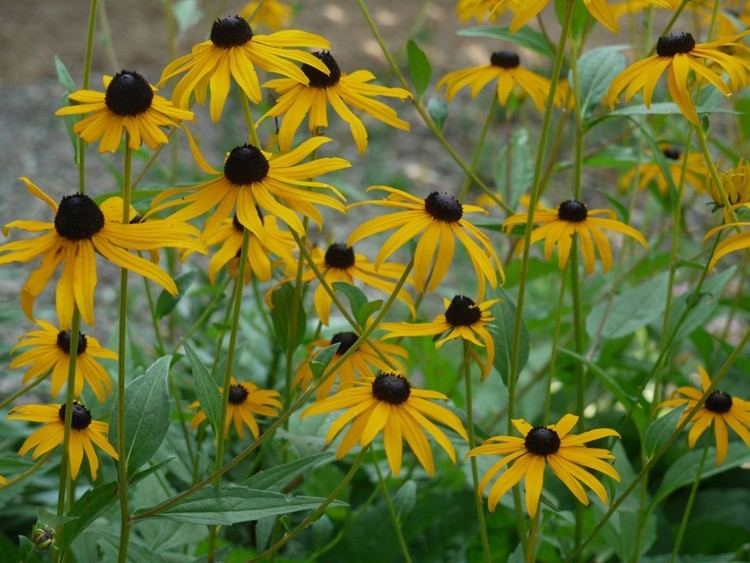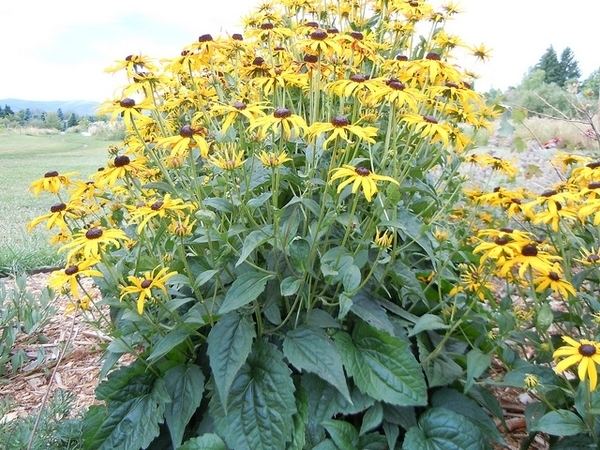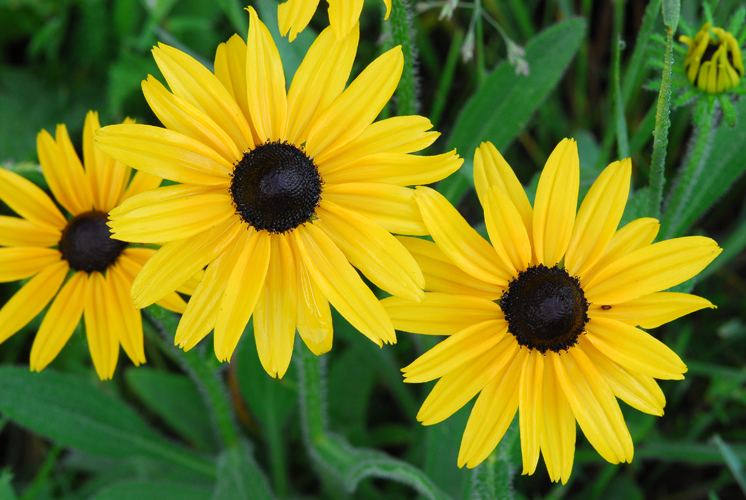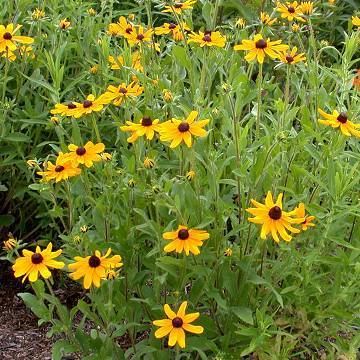Rank Species Higher classification Coneflowers | Scientific name Rudbeckia hirta | |
 | ||
Similar Coneflowers, Daisy family, Tickseed, Rudbeckia laciniata, Rudbeckia fulgida | ||
Rudbeckia hirta black eyed susan how to grow rudbeckia
Rudbeckia hirta, commonly called black-eyed-Susan, is a North American species of flowering plants in the sunflower family, native to the Eastern and Central North America and naturalized in the Western part of the continent as well as in China. It has now been found in all 10 Canadian Provinces and all 48 of the states in the contiguous United States.
Contents
- Rudbeckia hirta black eyed susan how to grow rudbeckia
- Minnesota native plant black eyed susan rudbeckia hirta var pulcherrima
- Description
- Etymology
- Varieties
- Cultivation
- Maryland state flower
- Symbol of Justice
- University of Southern Mississippi
- Butterfly attractant for enhancing gardens
- Traditional Native American medicinal uses
- Nutritional parts
- Cautions
- References

Rudbeckia hirta is one of a number of plants with the common name black-eyed Susan. Other common names for this plant include: brown-eyed Susan, brown betty, gloriosa daisy, golden Jerusalem, English bull's eye, poor-land daisy, yellow daisy, and yellow ox-eye daisy.

Rudbeckia hirta is the state flower of Maryland.
The plant also is a traditional Native American medicinal herb in several tribal nations; believed in those cultures to be a remedy, among other things, for colds, flu, infection, swelling and (topically, by poultice) for snake bite (although not all parts of the plant are edible)
Parts of the plant have nutritional value. Other parts are not edible.
Minnesota native plant black eyed susan rudbeckia hirta var pulcherrima
Description
Rudbeckia hirta is an upright annual (sometimes biennial or perennial) growing 30–100 cm (12–39 in) tall by 30–45 cm (12–18 in) wide. It has alternate, mostly basal leaves 10–18 cm long, covered by coarse hair, with stout branching stems and daisy-like, composite flower heads appearing in late summer and early autumn. In the species, the flowers are up to 10 cm (4 in) in diameter, with yellow ray florets circling conspicuous brown or black, dome-shaped cone of many small disc florets. However, extensive breeding has produced a range of sizes and colours, including oranges, reds and browns.
Etymology

The genus name honors Olaus Rudbeck, who was a professor of botany at the University of Uppsala in Sweden and was one of Linnaeus's teachers. The specific epithet refers to the trichomes (hairs) occurring on leaves and stems.
Varieties
There are four varieties

Cultivation
Rudbeckia hirta is widely cultivated in parks and gardens, for summer bedding schemes, borders, containers, wildflower gardens, prairie-style plantings and cut flowers. Numerous cultivars have been developed, of which 'Indian Summer' and 'Toto' have gained the Royal Horticultural Society's Award of Garden Merit. Other popular cultivars include 'Double Gold' and 'Marmalade'.
Gloriosa daisies are tetraploid cultivars having much larger flower heads than the wild species, often doubled or with contrasting markings on the ray florets. They were first bred by Alfred Blakeslee of Smith College by applying colchicine to R. hirta seeds; Blakeslee's stock was further developed by W. Atlee Burpee and introduced to commerce at the 1957 Philadelphia Flower Show. Gloriosa daisies are generally treated as annuals or short-lived perennials and are typically grown from seed, though there are some named cultivars.
Maryland state flower
Symbol of Justice
The black-eyed Susan which also traditionally symbolizes “Justice” makes a very nice cut-flower with a vase life up to 10 days.
University of Southern Mississippi
In 1912, the black-eyed Susan became the inspiration for the University of Southern Mississippi school colors (black and gold), suggested by Florence Burrow Pope, a member of the university's first graduating class. According to Pope: “On a trip home, I saw great masses of Black-Eyed Susans in the pine forests. I decided to encourage my senior class to gather Black-Eyed Susans to spell out the name of the class on sheets to be displayed during exercises on Class Day. I then suggested black and gold as class colors, and my suggestion was adopted."
Butterfly attractant for enhancing gardens
Traditional Native American medicinal uses
Juice from the roots has been used as drops for earaches.
